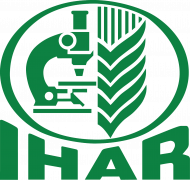Abstract
Optimization of planting geometry and spacings plays a pivotal role in potato cultivation. The current study was conducted to evaluate the effects of different row arrangements (single row and paired row) and inter- and intra-row spacings on potato production. Paired row planting exhibited a substantially higher plant density, exceeding that of single row planting by 64.5%, and resulted in a 60.1% greater final plant population at harvest. Narrower inter- and intra-row spacings (40 cm and 10 cm, respectively) resulted in the highest plant density and dry matter accumulation, leading to a 10.7% higher tuber yield (25.8 t ha⁻1). However, wider spacings produced larger tubers, with the 55-cm inter-row spacing recording the highest share of tubers of > 100 g. Paired row planting resulted in a higher proportion of marketable tubers (57.3%) in the 41–100-g range, while single row planting produced more non-marketable tubers (< 40 g and > 100 g). Nutrient use efficiency, measured as the partial factor productivity of N, P, and K, was 10.7% greater in paired row planting than in single row planting. Energy output was greater in paired row systems, reaching 92.88 GJ ha⁻1, with the highest net energy recorded at 57.13 GJ ha⁻1 in the 40 cm inter-row spacing. Paired row planting with narrower spacings improved yield, nutrient use efficiency, and energy output, though at the expense of higher costs of cultivation. The current findings underscore the significance of optimizing planting geometry and spacing to achieve a balance between yield, tuber quality, and energy efficiency in potato production, tailored to specific production objectives.















